HTC EVO 3D vs. Motorola Photon 4G: Choosing the Best Sprint Phone
by Anand Lal Shimpi on August 17, 2011 11:11 PM ESTSprint customers almost always get the short end of the stick. In exchange for some of the more reasonable smartphone plans in the US, Sprint customers typically enjoy a mediocre selection of phones. Over the years there have been a few that have stood out. The Palm Pre and EVO 4G both come to mind. But generally speaking, all of the cool phones go elsewhere. In fact, the last Sprint phone we reviewed was the Samsung Epic 4G and that was almost a year ago. Of course more phones have debuted on Sprint since then, they just haven't been all that interesting.
Until now of course.
Today we have Sprint's two flagship Android smartphones: the HTC EVO 3D and the Motorola Photon 4G. Despite naming differences both support Sprint's 4G WiMAX network, have dual-core SoCs and boast 4.3-inch screens, but these two are far more different than you'd expect.
The EVO 3D uses a 1.2GHz Qualcomm Snapdragon S3 (MSM8660) and can capture/display 3D content. Meanwhile the Photon 4G is NVIDIA's debut phone on Sprint, featuring a 1GHz Tegra 2 and a high resolution 8MP rear camera sensor.
Before we get too far down the internal comparison, let's talk about the hardware itself first.
| Sprint EVO 3D vs. Photon 4G | ||||
| EVO 3D | Photon 4G | |||
| Height | 127 mm | 126.9 mm | ||
| Width | 66.0 mm | 66.9 mm | ||
| Depth | 11.9 mm | 12.2 mm | ||
| Weight | 170g | 158g | ||
| SoC | 1.2GHz dual-core Qualcomm Snapdragon S3 MSM8660 | 1GHz dual-core NVIDIA Tegra 2 | ||
| GPU | Qualcomm Adreno 220 | NVIDIA ULP GeForce | ||
| System Memory | 1GB | 1GB | ||
| NAND |
4GB NAND internal 8GB SanDisk class 4 microSD preinstalled |
16GB NAND internal |
||
| Display |
4.3" 3D qHD - 960 x 540 LCD |
4.3" qHD - 960 x 540 RBGW PenTile LCD |
||
| Display Output | HDMI via MHL | microHDMI | ||
| Front Camera | 1.3MP | 0.3MP | ||
| Rear Camera | 2 x 5MP 3D w/ Dual LED Flash | 8MP w/ Dual LED Flash | ||
| Battery | Removable 6.57 Whr | Removable 6.3 Whr | ||
| Shipping Android Version | 2.3.3 | 2.3.4 | ||
| Contract Price | $199 ($549 off-contract) | $199 ($549 off-contract) | ||
The physical comparison boils down to personal preference. The Photon has a lighter and more plasticky feel while the EVO 3D feels more dense and higher quality. Both are awkwardly large thanks to their 4.3" screen size, but the matte and textured finish of the EVO 3D actually does make it easier to hold than the Photon.
Where the Photon starts winning back points is with its kickstand. I've always been a fan of integrated kickstands and the Photon's is no exception. It's convenient for anyone that keeps their phone on a desk, uses it as an alarm clock or watches a lot of movies on it. Although I can't bring myself to spend two hours staring at a smartphone screen (even a large one), I know it's something that people do and the kickstand can be quite useful for those folks. Unfortunately you can't control the angle of the kickstand, so if you're super tall and seated in coach it may not be all that convenient.
Stylistically the EVO 3D takes a more conservative but well received approach, while the Photon tries something new with its long-octagon shape. There's nothing gained by Motorola chopping off the corners of the Photon, it's just different.
The Photon's atypical styling extends to the volume rocker as well. While the power/lock button is fairly standard, the volume rocker is textured with horizontal slits. Button presses are not firm but not mushy either.
The EVO's buttons by comparison are more traditional but extremely low profile. The obvious exception being the massive camera shutter release button, which feels good but not as great as you'd expect. It's also slightly disappointing that unlike on a WP7 device, hitting the camera button doesn't automatically bring the phone out of sleep and drop you into the camera app. If the EVO is unlocked and awake however, the button does just that.
To play up the 3D gimmick make it easier to switch between 2D and 3D shooting modes there's a physical toggle switch on the EVO 3D, next to the shutter release button. You only need the toggle for capture, when playing back content the display automatically switches between 2D and 3D modes.
Pulling off the back cover is far easier on the Photon. The EVO 3D makes you pull a little too much and some of the notches don't seem like they want to let go. Unlike some more recent HTC phones, the EVO 3D doesn't include any antennas in the rear cover - everything is baked into the body of the phone.
Both phones feature a removable battery. The EVO 3D has a 6.57 Wh unit while the Photon 4G's battery weighs in at 6.3 Wh. Behind the battery is a microSD card slot (with an 8GB card) on the EVO 3D. The Photon 4G on the other hand comes with no microSD card installed (but 16GB of NAND on-board) in addition to a SIM card. The Photon 4G includes a Qualcomm MDM6600 that gives it HSPA+/GSM support. The full list of supported networks and frequencies is below:
| Network Support | ||||||
| Total System Power | WiMAX | CDMA | WCDMA | GSM | ||
| HTC EVO 3D | 2.5 - 2.7GHz | 800/1900MHz | N/A | N/A | ||
| Motorola Photon 4G | 2.5GHz | 800/1900MHz | 850/1900/2100MHz | 850/900/1800/1900MHz | ||
If you're in need of a phone that can be used overseas, the Photon 4G is your only option of these two. The EVO 3D can only work on Sprint's CDMA and WiMAX networks.
The EVO 3D and Photon 4G both support HDMI out but through very different approaches. Motorola uses a standard micro HDMI connector, while HTC uses a MHL USB connector. When used with a standard USB cable the MHL USB connector acts like a normal micro USB port for charging and data transfer. If you've got an MHL to HDMI cable however you can get HDMI out of the phone. Unfortunately neither company ships their phone with the appropriate cable to get video output. With the right cable both phones support mirroring over HDMI.















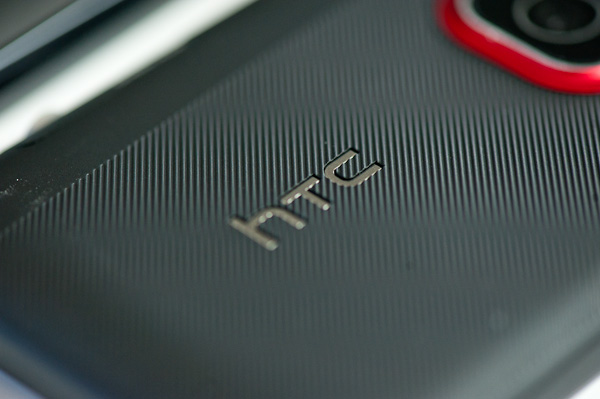
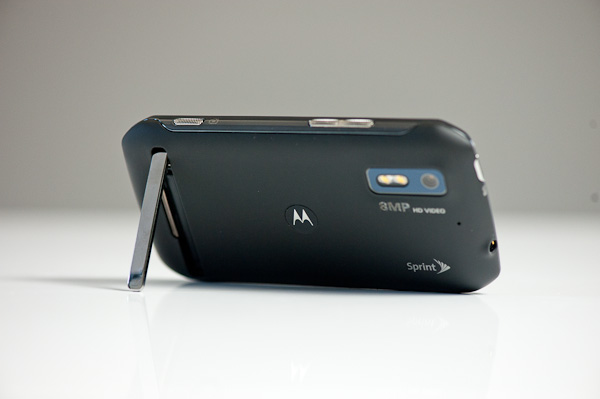
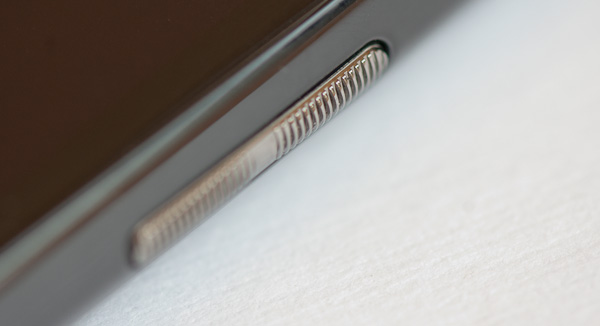
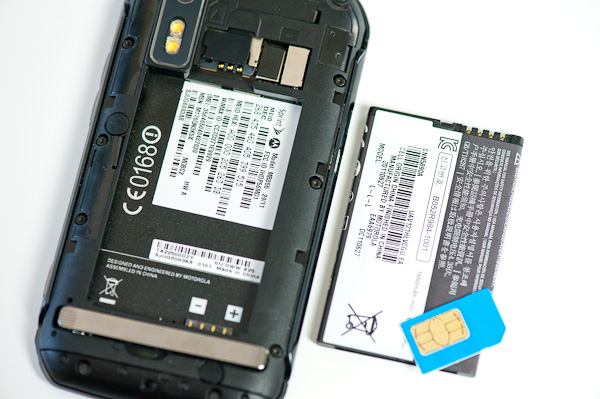
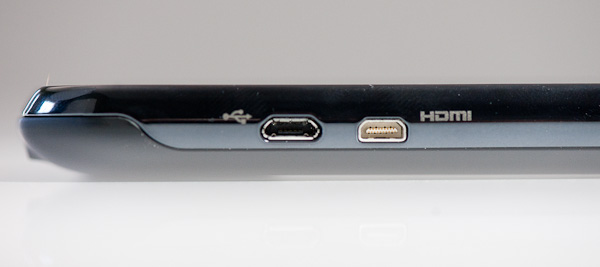








43 Comments
View All Comments
Palmer 3 - Monday, August 22, 2011 - link
How certain are you that the parallax barrier is always in place?When I look at a 3D picture there is a graininess to the image. If I close one eye I can see the "black" vertical lines that were intended for the other eye. When looking at a non 3D image and I close one eye I do not see these black lines. I would assume if the barrier was present the lines would still appear since you cannot see though the barrier.
Dan-Spradling - Wednesday, September 7, 2011 - link
Ok, I'm a long time Sprint customer and I been holding out for the I-Phone to come to Sprint but I hear that's just rumor for now so I decided to try an Android phone to upgrade from a Blackberry Tour. After days of reading customer reviews everywhere on the internet (including Amazon) I decided to take a chance and all I can say is WOW, this phone is light years better than my Blackberry. It's very fast, the touch screen is very responsive, screen resolution is excellent in my opinion, camera and video recorder is nice, phone sound quality and reception is great, I could go on and on!Cons: I noticed the battery is not as long lasting as my old Blackberry but its not bad. Also I still can not find a way to stop the a song when its played on the music player. Only thing you can do to stop it is hit the pause button, perhaps something I am doing wrong. One final thing they should include a full manual with the purchase not just a starter guide. I had to go online to download the 155 page manual.
Overall this is an excellent phone!!! I am very pleased with the purchase. I was a loyal Blackberry user but RIM refuses to come out with better phones so... bye bye Blackberry. There is no going back now.
See Motorola Photon 4G Best Deal at: www.amazon.com/gp/product/B005C5QLVK/ref=as_li_ss_tl?ie=UTF8&tag=othersitecomment-20&linkCode=as2&camp=217145&creative=399373&creativeASIN=B005C5QLVK
guitarpete987 - Tuesday, January 17, 2012 - link
I've tried both, and the decision maker for me was believe it or not the music app. I love the way the Photon music app is designed, how it works well with my home upnp setup and the functionality it has to make "Genius" style random playlists from your collection, which seems to do an even better job than apples method.